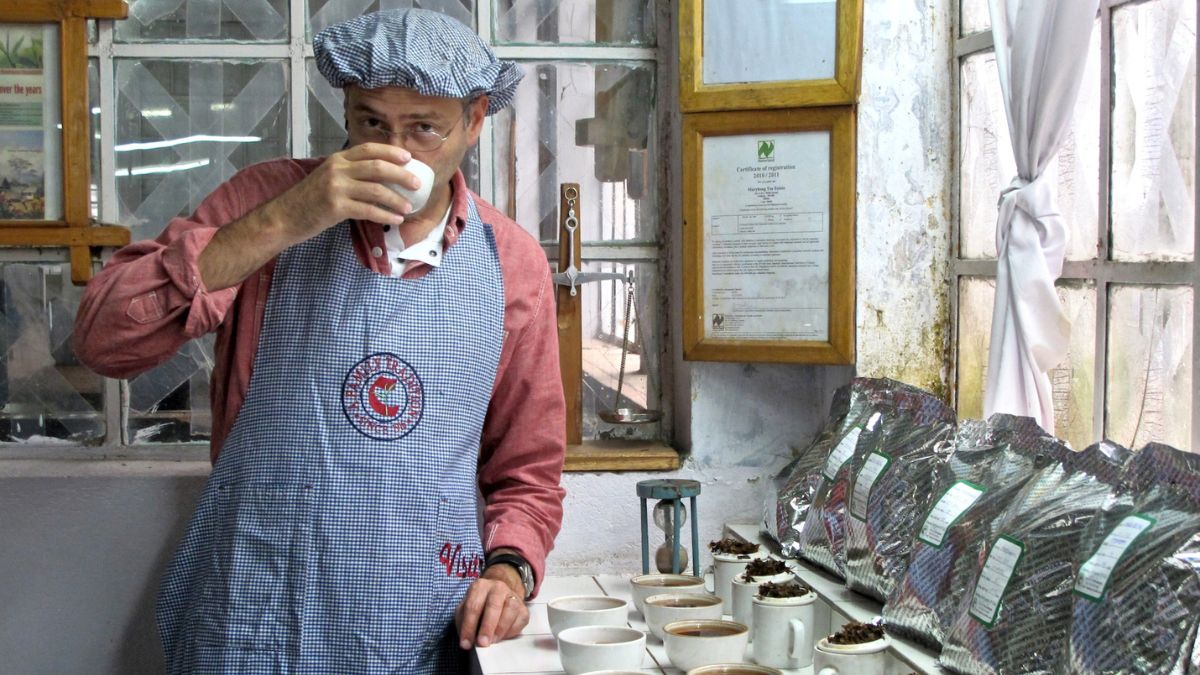Darjeeling in a cup: Tracing the soul of India's finest tea

Often called the “champagne of teas”, Darjeeling tea is a premium black tea grown in the foggy, sprawling hills of West Bengal's Darjeeling. Cultivated at high altitudes, it is prized for its delicate aroma, as well as a distinct muscatel flavour that sets it apart from other varieties, making it a favourite among tea connoisseurs worldwide.
In a conversation with THE WEEK, Jeff Koehler, an award-winning food and travel writer, and the author of four cookbooks and two non-fiction works—including 'Darjeeling: A History of the World's Greatest Tea', which won the 2016 IACP Award for Literary Food Writing—talks about his tea-centric novel, and how four years of post-study travel through Africa, Asia, and the Middle East led him to discover food as deeply as people and places.
How did you come up with this subject of Darjeeling tea for the book? Have you been a tea lover since youth?
I grew up in the American Pacific Northwest, just north of Seattle, and wasn’t always a huge tea drinker. It was in Darjeeling, when I was travelling around Asia after university, that I first tasted tea. By that I mean just tea: no milk, no sugar, no spices, no lemon, just pure tea. It was winter. I was staying at the Planter’s Club, and I marvelled at how a cup of plain tea could have that toasty flavour, bristling with peans and apricots.
That was in the mid-1990s, before I began writing about food. In the years that followed, I spent quite a bit of time in India. I was also travelling widely, and visited tea plantations from Kenya to Malaysia and Japan.
The more I learned about Darjeeling and its tea, the more interested I became—and the more special Darjeeling seemed: its tea, of course, and the story and culture behind it.
The more I dug, the more it seemed that Darjeeling’s story encompassed so many elements, as I wrote in the introduction:
“And at its source, the world’s most celebrated tea is more than just any crop—it’s the history and politics of India and Britain, the legacy of colonialism, the rise of global commerce and worker aspirations, the perils of climate change, and much, much more, writ large, and brewed into one glorious cup of amber liquid.”
I believe that we write what we want to read, and the story of Darjeeling was the story I wanted to read. There wasn’t a good book about it. So I ended up writing one.
Your book is split into four sections, each one of them named after a flush of tea: 'First', 'Second', 'Monsoon' and 'Autumn(al)'. Was it a conscious decision?
I knew from the beginning I wanted to structure it like this; to give the book an overall framing arc of the harvest seasons. One of the amazing things in Darjeeling is how tea brewed from leaves taken from the same tea bush changes over the course of the harvesting year. It is nothing short of miraculous to see its light lemony yellow colour in spring … gradually deepen until it is almost crimson in late autumn.
It really is the ultimate story of terroir. I love how the leaves themselves change, with the processing depending on the weather. Tiny adjustments are done each day from the morning tastings.
I was able to follow the entire harvesting year in Darjeeling, visiting the same gardens throughout the four flushes. I wanted to try and capture that change in the book.
You spent a lot of time in Darjeeling to do research for your book, and spoke to many different people who are involved in this industry. What is your take on the future of the Darjeeling tea industry?
A decade ago, there was significant concern due to changing weather patterns and erratic rains. These changes seem to be accelerating, and with them, concerns rise about not just the future, but also the present of Darjeeling tea.
You mention the Darjeeling tea industry's challenges—climate being one of the main concerns. Do you believe that due to climate change, Darjeeling tea is losing its texture, aroma and flavour?
A lack of rain and an increase in temperature can affect Darjeeling’s unique aromas and flavors. Yet, there are still magnificent Darjeeling teas being produced. Production volume has dropped, however. There is a lot less of it than before.
Recently the local government announced that 30 per cent of tea garden land could be used for other business purposes. How do you respond to this? Will it destroy the biodiversity of Darjeeling and its culture? Will Darjeeling tea lose its heritage tea culture?
A few gardens have tackled the issue of tourism in the past. Perhaps the most notable success is with Glenburn, consistently rated as one of the best boutique hotels in India.
A luxury hotel with just 8 rooms, it has been built in a manner very sensitive to the land. To stay is to fully understand the traditions and the culture of Darjeeling tea, as well as to understand the need to do everything possible to help preserve it.
You mentioned in your book that the absentee rate of the pluckers is also a cause for a fall in production volume. What do you think is the cause of labour absenteeism? Is this because the minimum wage is very low? Are facilities not enough for them to remain in the same industry? Or has the aspiration level gone up, especially among the youth?
It seemed clear that absenteeism was being driven by a combination of education and a connection to the outside world via phones, computers, and TV. The combination created aspirations for the younger generation who see their future outside of a tea garden.
However, it also fuelled the aspirations of parents, who see their kids with better lives away from the gardens.
Lifestyle